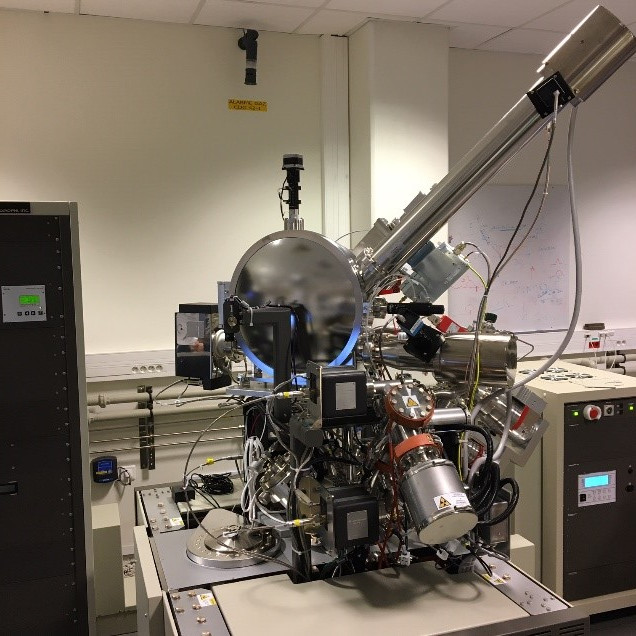Instruments
Overview
Time-of-Flight Secondary Ion Mass Spectrometry (ToF-SIMS) is a highly surface-sensitive technique that can provide detailed elemental and molecular information both on the surface and in depth. It is particularly adept at offering insights into the 3D chemical composition of a material. Recent advancements in ToF-SIMS, such as the introduction of an argon cluster ion beam and a tightly focused ion beam, have significantly enhanced its performance, especially for analyzing organics (such as polymers and small molecules) and biological materials. ToF-SIMS operates by detecting secondary ions that are ejected from a surface due to bombardment by primary ions. This method allows for the analysis of the chemical composition on the surfaces of both organic and inorganic samples.
Through ToF-SIMS analysis, it is possible to directly obtain both molecular and elemental data from the extreme surface across a broad mass range (from 0 to 10,000 atomic mass units) for all elements of the periodic table, including their isotopes and molecules, with high sensitivity (ranging from parts per million to parts per billion). The technique features mapping capabilities that deliver highly localized information with a beam spot size of about 100 nm, along with the ability for depth profiling at sub-nanometer resolution. These capabilities collectively enable a comprehensive 3D compositional analysis of the sample.
The instrument can analyze a variety of materials, including inorganic, organic, conductive, and insulating samples. Analysis may necessitate the use of standards to quantify signals and address mass interferences and variations in ionic yields. Additionally, the ToF-SIMS NCS model combines ToF-SIMS with a Scanning Probe Microscope (SPM), allowing for the measurement of the surface’s initial topography and its changes during analysis. The SPM also provides complementary information about surface topography and can measure the physical properties of the analyzed volume. By integrating these two techniques, a precise in-situ 3D chemical image of the sample becomes achievable.

Key Features
- The in-situ Atomic Force Microscope (NanoScan VLS-80) is integrated with the ToF-SIMS instrument, allowing for topographical analysis in Contact, Intermittent, and Non-Contact scan modes, which includes deflection and phase imaging capabilities.
- High-resolution mass spectra are achieved through a pulsed ion beam. The Bi Nanoprobe technology enhances SIMS analysis by providing high lateral resolution (70 nm) and densely rastering the field of view.
- The Argon Gas Cluster Ion Source is especially effective for analyzing large mass molecules, as it preserves nearly intact molecular information and provides a high sputter yield for detailed depth analysis.
- The Dual Source Column, equipped with O2 and Cs ion sources, is highly versatile for analyzing both inorganic and organic materials. This setup enables the detection of both positive and negative ion polarities.
- An electron flood gun and oxygen flooding are utilized to neutralize charge build-up and enhance signal intensity during analysis. These features make it possible to analyze all types of materials, whether conductive or insulating.
- Extended Dynamic Range Analysis allows for the recording of intensity levels exceeding 100 ions per pulse per mass, maintaining excellent linearity.
- Fast Sample Rotation is a newly introduced feature designed to minimize the formation of ion beam-induced surface roughening from sputtering.
- The Sample Heating and Cooling option provides temperature control for heating and cooling the sample from -130°C to +600°C with a precision of +/- 1°C.
- The Transfer Vessel maintains the sample holder in a clean environment, such as a glove box under an inert gas atmosphere, and transports it to and from the instrument without exposing the sample to ambient air.



